South Cambridgeshire, England
by
Phil Maynard
01763 838311
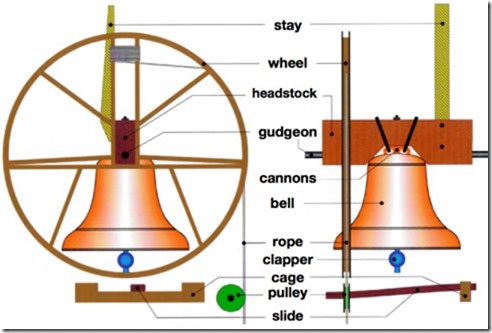
Parts of the bell

Practices
Wednesday evenings
8pm
Everybody welcome
GREAT CHISHILL BELL RESTORATION PROJECT |
||||||||||||||||
|---|---|---|---|---|---|---|---|---|---|---|---|---|---|---|---|---|
|
Background
As the Millenium approached, the residents of Great Chishill were given the opportunity to vote fora celebratory project, and the majority vote went to getting the bells ringing again. The bells had not been rung for 25 years and had fallen into a very sorry state of repair. A huge amount of effort was put into raising the necessary funds for the project, enough to have the bell fittings and the frame repaired so that the bells were fit to be rung again. Surprisingly, the bells are still being rung regularly, and are a sound familiar to everyone in the village.
How can you help?
There are several ways in which you can help. Obviously, with only having half the required funds, we need to raise some more money. This can be by donations - we have a 'Just Giving Page' - fund raising events, physically helping with manpower to remove and replace the bells, transport of the bells to and from the bell hangers just outside Oxford, spreading the word via your social media accounts and coming up with any other fund raising ideas.
What does the Project involve?
The 5 bells will each need to be lifted from the frame and lowered down the inside of the tower (avoiding the clock mechanism on the floor below), and out to a lorry to transport them to Oxford, where they will be fitted with new clappers, crowns, headstocks and bearings, and be skimmed to tune them using the latest high tech equipment. Whilst this is in progress, steel beams will be fitted into the tower, to which the existing frame will be bolted. At the same time, more beams will be fitted to accommodate a 6th bell. The bells will then return from Oxford, be hoisted into the tower, attached to the strengthened frame on their new bearings and have new wheels fitted.
What's this about a 6th bell?
St Swithun's currently has 5 bells, 4 made in 1686, and the 5th in 1841. Having only 5 bells is fairly unusual and has a limited repertoire of things that can be rung - there are 120 different combinations of the order in which they can ring (Heydon also has only 5). A 6th bell increases the combination to 720 thus vastly increasing the repertoire. A local couple have generously paid for a 6th bell to be cast and this will be the smallest bell and thus the one with the highest pitch and will be the new first (treble) bell, mounted on the new steel frame.
Here in Great Chishill, our church, St Swithun’s, has 5 bells mounted in its tower. Four of these bells were made in 1686, and the 5th in 1841. We don’t know much about the history of the bells, whether they have always hung in this church or whether they rang somewhere else first, but we can be fairly certain that they have been ringing out in celebration for at least 300 years. We do know that they fell into disrepair in the 1970s but the village elected to have them renovated as a Millennium project and they have been rung regularly ever since.
The restoration that was done for the millennium, was in fact the minimum that needed doing to get them ringable to celebrate the millennium. They have been rung regularly, on practice night (Wednesday) nearly every week, on Sunday mornings before church services, at weddings and it is now a well established tradition to ring in the new year at midnight on New Years Eve. However, they are difficult to ring for a variety of reasons, not least of which is because they are ‘odd struck’ which means that the clapper doesn’t catch up with the bell at the same time on the two different pulls on the rope. On top of that, the bells are mounted in a wooden frame which was made at about the same time as the bells, and it is believed that this frame was made out of recycled wood then – so goodness knows how old the wood for the frame is! There is nothing wrong with the frame being so old, it is safe, but it ‘gives’ and moves about a bit which has an effect on the timings.
My wife Sue and I started to learn to ring bells shortly after we came to Great Chishill at the end of 2006. We had seen the sign at the church saying that new people would be welcome, and we thought it would be a good way to meet people and become involved in village life. How right that proved to be! We had no previous knowledge about bell ringing, and if asked, we probably would have thought, like most people, that ringing the bells was just a matter of tugging on a rope to make the bell ring. We were to very soon find out that that is not the case at all. In fact, just getting the bell to ring is quite a skill, and getting it to ring at the right time proved to be near impossible for us for the first 3 months or so of learning!
Church bells in Britain and the Commonwealth and just a few other places, are rung in a completely different way to anywhere else in the world. We don’t just pull a rope to swing a bell until it chimes, we actually make the bell swing through slightly more than 360 degrees. The bell is connected to a large wooden wheel
If you would like to know more about bell ringing in Great Chishill, then please come along at 8pm on a Wednesday and see what it is all about, or if you would like to make a donation, or fund raising suggestion, then please get in touch. The bells have been ringing out from the top of our hill for 300 years, lets keep them going well into the future!
|

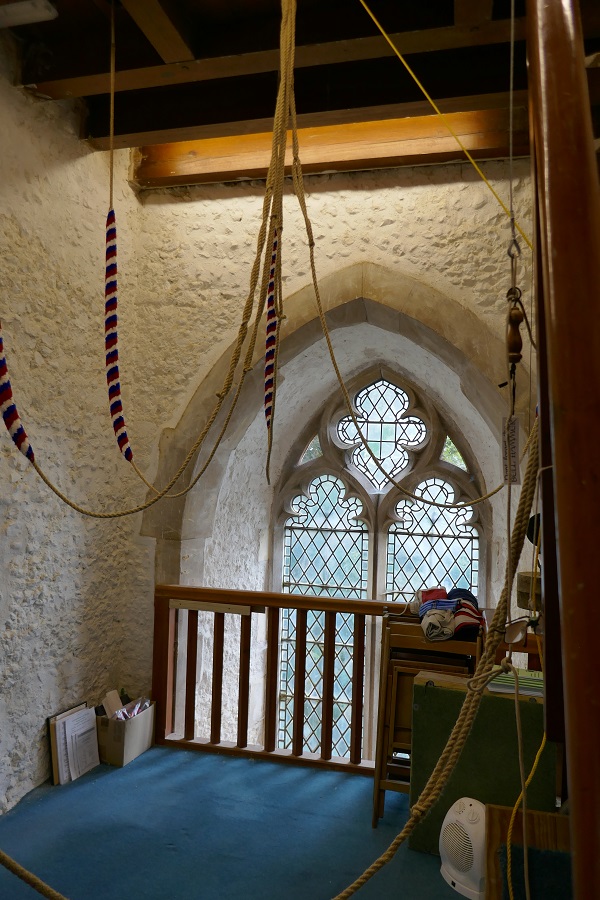
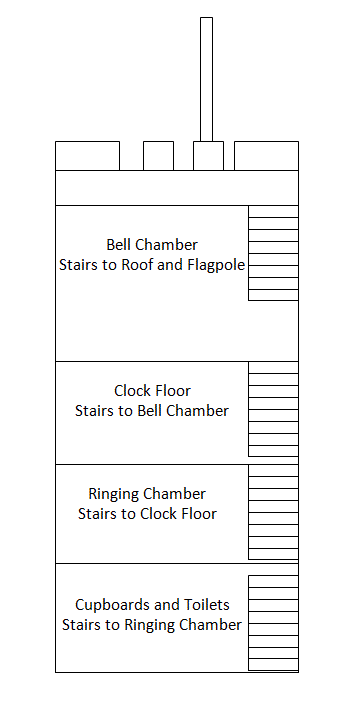
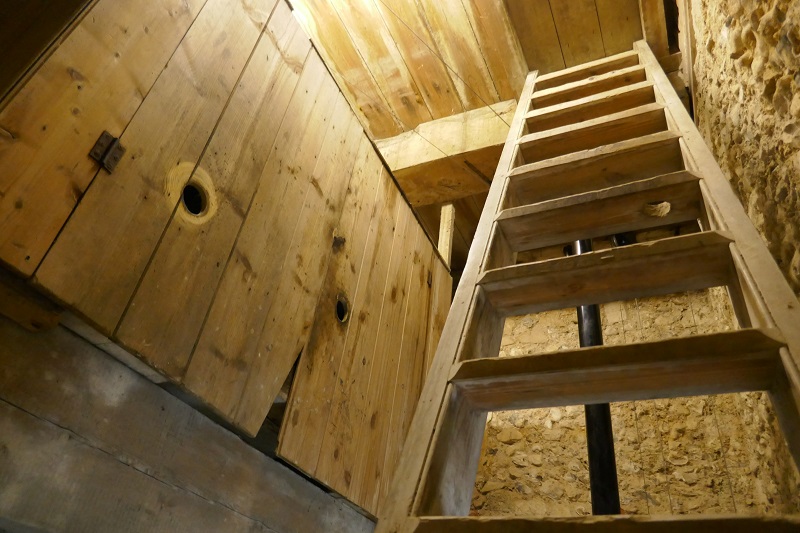
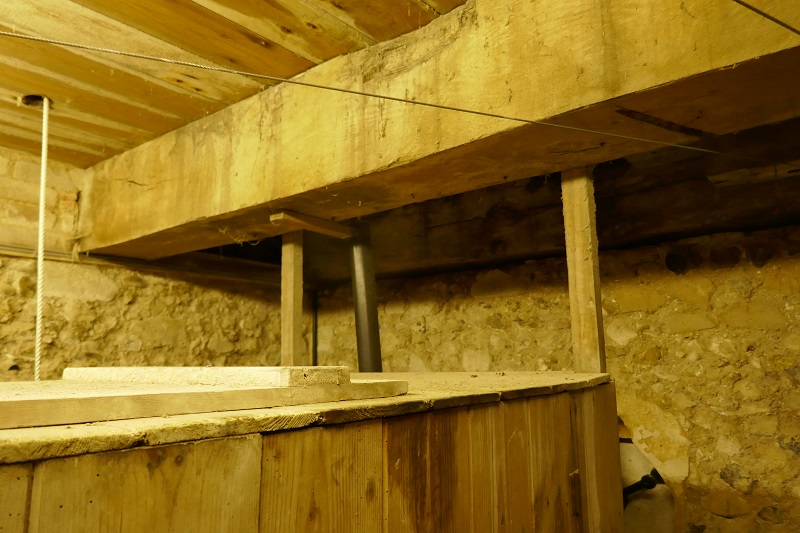

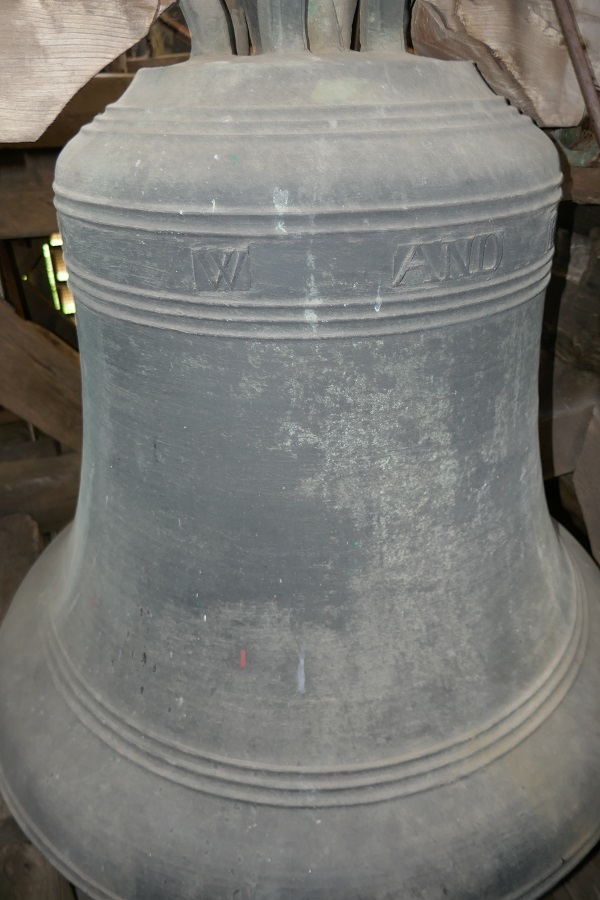
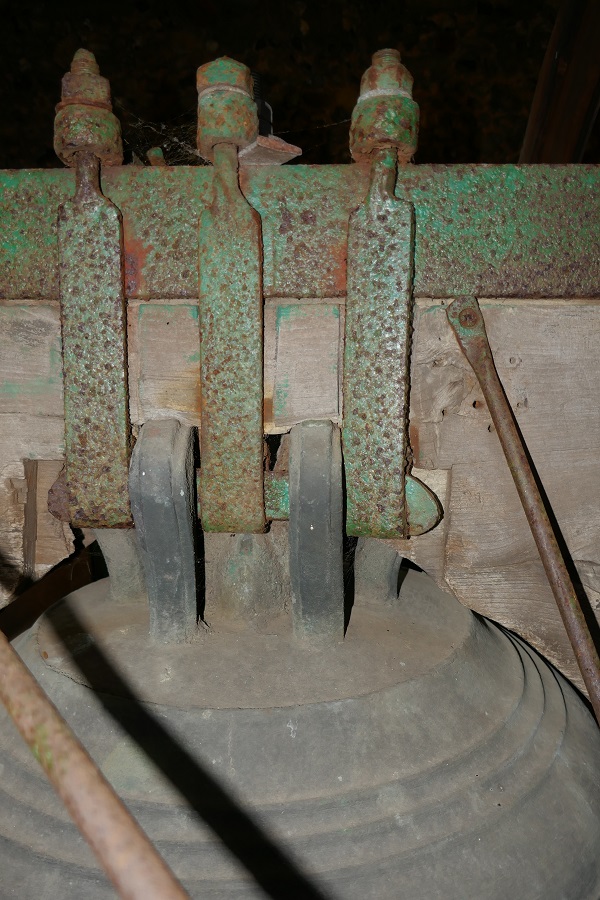

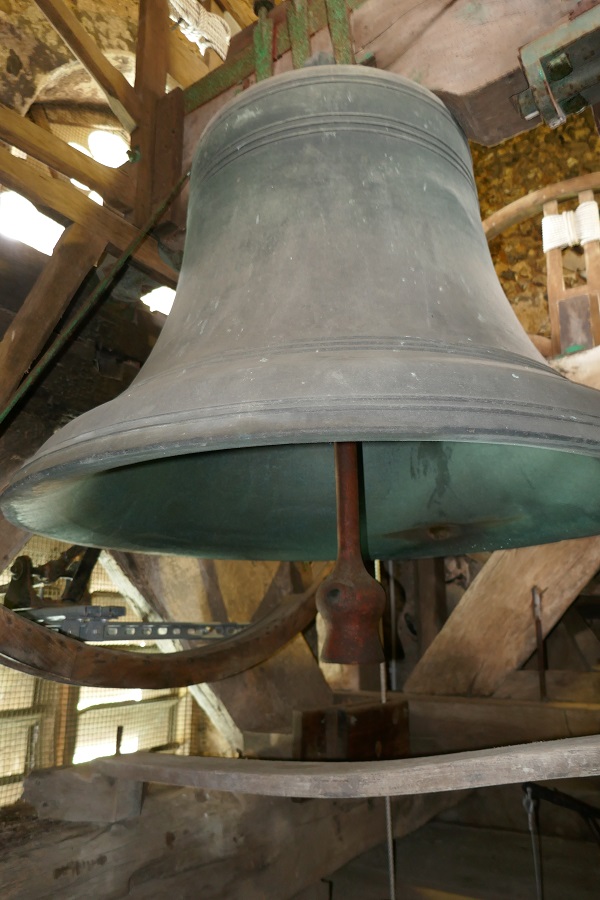
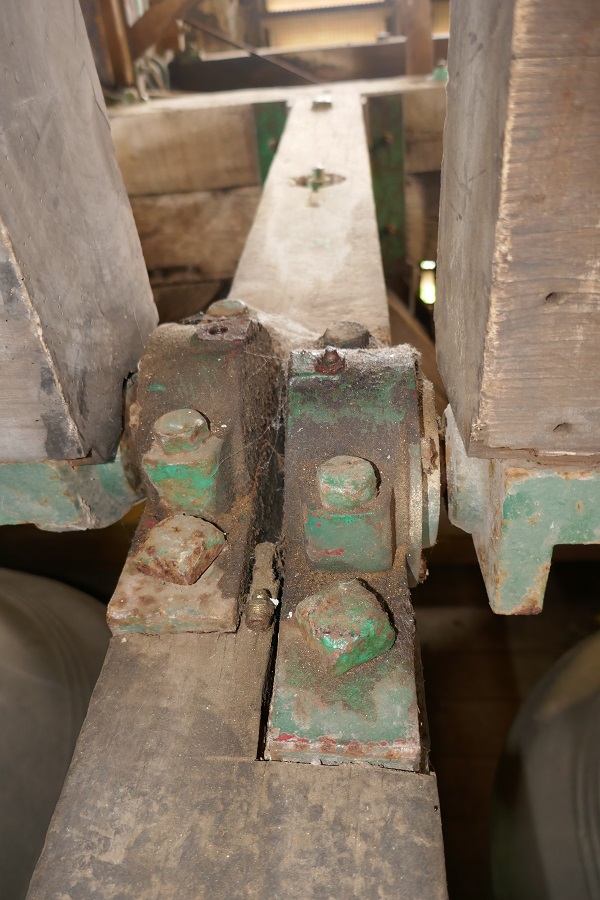

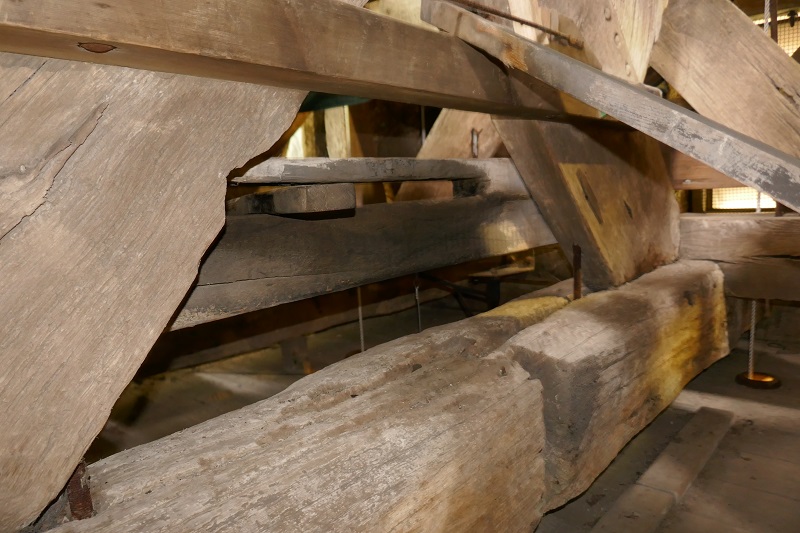
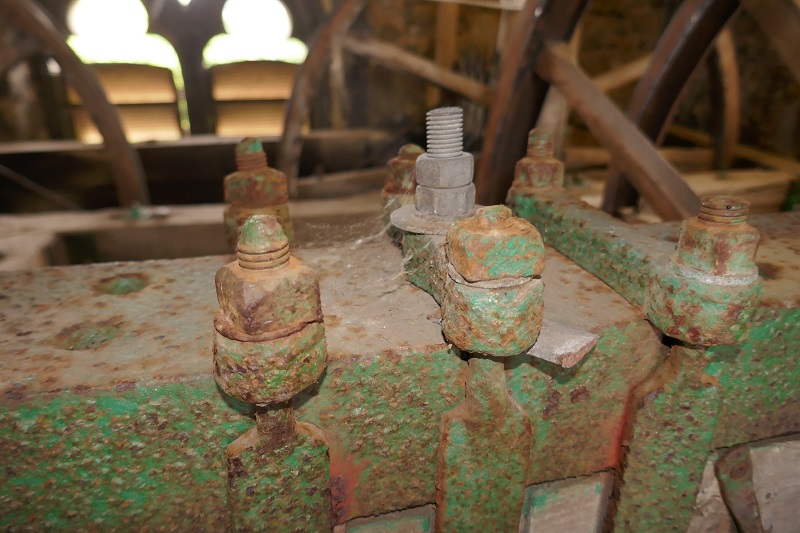
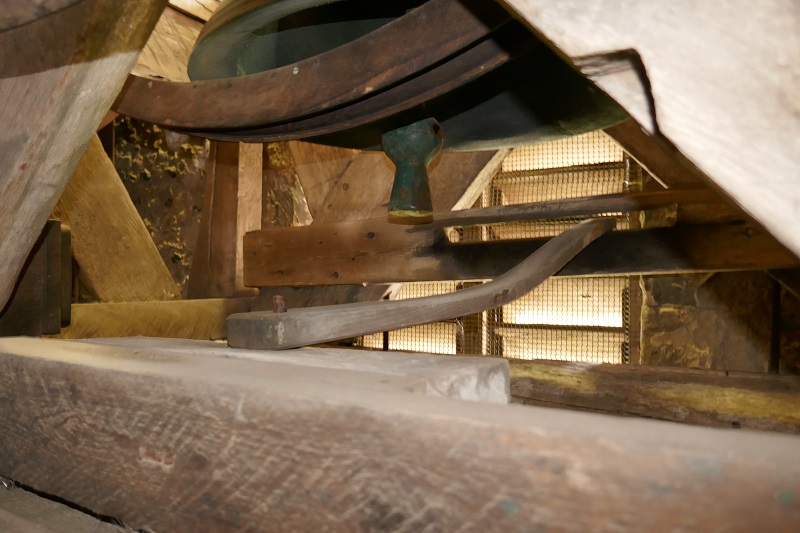
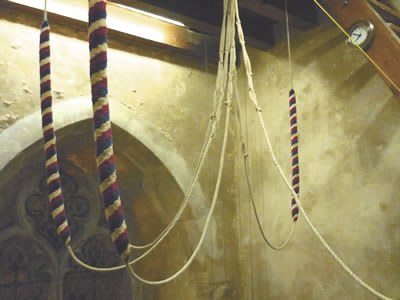
 which has a diameter of about 2˝ times the height of the bell, and it is to this that the rope is attached. The bell starts upside down, then when we pull on the rope, the bell rotates through a full circle until it is upside down again. The sound is made when the clapper inside the bell catches up with the bell, which is in fact after it has gone 180 degrees. The skill of just ringing the bell comes from the fact that you are holding onto a rope that has on the end of it, a piece of metal which weighs, in the case of the biggest bell in St Swithun’s, the equivalent of 7 full kegs of beer (10 cwt and 3 quarters). Once that is moving there is no way that you are going to be able to stop it. Secondly, there is a delay between pulling on the rope and the bell ringing. Once one has mastered the art of just ringing the bell on the hand stroke (that’s pulling on the woolly coloured part called the 'sally'), then on the back stroke, (when the sally has disappeared up into the ceiling), the next task is to be able to do it at just the right time, with just the right amount of pull, to make it ring just after the previous bell rang, so that the five bells ring one after the other, the highest pitched (the treble) ringing first, and the lowest, heaviest bell (the tenor) ringing last. Then it all starts again. This is called ringing in rounds, and it is what you will most commonly hear us doing. After that, it’s a matter of doing ‘change ringing’ where the order in which the bells are rung is changed, and after that ‘methods’ where all the bells change according to a fixed pattern on every round – but we won’t go into that here!
which has a diameter of about 2˝ times the height of the bell, and it is to this that the rope is attached. The bell starts upside down, then when we pull on the rope, the bell rotates through a full circle until it is upside down again. The sound is made when the clapper inside the bell catches up with the bell, which is in fact after it has gone 180 degrees. The skill of just ringing the bell comes from the fact that you are holding onto a rope that has on the end of it, a piece of metal which weighs, in the case of the biggest bell in St Swithun’s, the equivalent of 7 full kegs of beer (10 cwt and 3 quarters). Once that is moving there is no way that you are going to be able to stop it. Secondly, there is a delay between pulling on the rope and the bell ringing. Once one has mastered the art of just ringing the bell on the hand stroke (that’s pulling on the woolly coloured part called the 'sally'), then on the back stroke, (when the sally has disappeared up into the ceiling), the next task is to be able to do it at just the right time, with just the right amount of pull, to make it ring just after the previous bell rang, so that the five bells ring one after the other, the highest pitched (the treble) ringing first, and the lowest, heaviest bell (the tenor) ringing last. Then it all starts again. This is called ringing in rounds, and it is what you will most commonly hear us doing. After that, it’s a matter of doing ‘change ringing’ where the order in which the bells are rung is changed, and after that ‘methods’ where all the bells change according to a fixed pattern on every round – but we won’t go into that here!